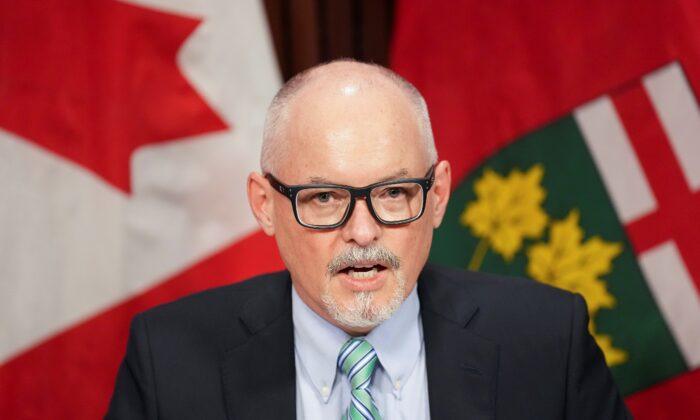On Twitter recently, COVID realists were supporting and cheering the public acknowledgement of vaccine risks in the young by Ontario’s Chief Medical Officer of Health Dr. Kieran Moore.
“We know there is a risk, a very small risk—1-in-5,000—that may get myocarditis,” Moore said at a news conference on July 13.
A range of politicians and “medical experts” have exhorted the public to get the fourth dose. Toronto’s Medical Officer of Health Dr. Eileen de Villa recommends everyone eligible should get the latest immunization.
“Keeping up to date with your immunization is the best way to ensure you, your loved ones, and your community are protected from the virus and its variants,” she said. “While the third dose provides good protection of COVID-19, the fourth dose provides even better protection.”
“After seven months, vaccinated people in their 50s and 60s had a 68 percent higher risk of being hospitalized for COVID compared to the unvaccinated. They had a 41 percent higher risk of needing intensive care,” he wrote of the researchers’ findings.
“There was hardly any visible protective effect of the COVID-19 basic vaccination series against hospital and ICU—intensive care—intake,” the researchers wrote, as quoted by Berenson.
Even if such data is anomalous in some respect or ungeneralizable, it suggests that universally recommending more and more booster shots is, at the very least, unwise or experimental.
“All individuals in Ontario aged ≥12 years of age are recommended to receive a first booster dose after completion of a primary COVID-19 vaccine series,” the ministry said on July 14.
What benefit does a healthy 23-year-old man with prior infection and two vaccine doses have to gain from a third jab? Does Dr. Moore have an answer to this question?
Knowledge of the incalculably low risk of COVID-19 in healthy individuals under 30 warranted comprehensive, long-term testing before universal recommendation. Instead, Ontario led the way in locking down the public, masking children, and recommending everyone get a booster with virtually non-existent clinical evidence.





